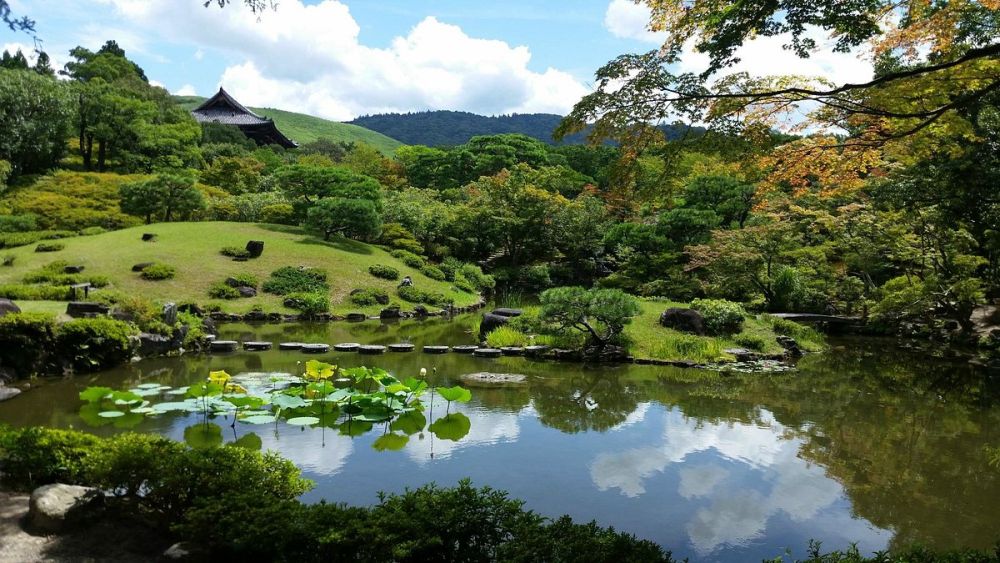

The Isuien Garden, located in the historic city of Nara, Japan, is a standout example of traditional Japanese garden design, drawing visitors from around the world to its carefully curated landscapes. Its history can be traced back to the Edo Period, offering a profound connection to Japan's past.
The garden we see today is divided into two parts, which were originally two separate gardens both constructed during the Edo Period (1603–1867). The name "Isuien" translates to "garden founded on water," which is a defining feature of the garden, as its ponds are filled by the small adjacent Yoshikigawa River.
The front garden, known as the front Isuien, was created in 1670 and later incorporated into the property of a wealthy merchant, Ueji Kiyosuke, in 1899. The back garden, or rear Isien, was added during the Meiji Era (1868–1912) by a different owner. It was completed sometime around the year 1899.
In 1939, a businessman from Nara named Jyunsaku Nakamura purchased both gardens and combined them into the single expansive Isuien Garden. Nakamura also brought in the Neiraku Art Museum to the grounds, which showcases Chinese and Korean artifacts alongside Japanese works, emphasizing the historical influence of Asian culture on Japanese tradition.
Today, the Isuien Garden is treasured for its historical value and the reflection of Japanese aesthetics, with its meticulously maintained trees, shrubs, moss, and stones arranged to embody the natural beauty of Japan's landscapes. The careful composition of the garden creates stunning views that change with the seasons, offering a different experience with each visit.
In recent times, Isuien Garden has witnessed an increasing interest from international visitors intrigued by Japanese culture and heritage. The garden has embraced this trend by providing multilingual guides and improving visitor facilities to cater to a global audience.
Sustainable Tourism: Emphasizing the importance of sustainable tourism, Isuien Garden preserves its natural resources and educates visitors on the significance of maintaining ecological balance within historic sites.
Seasonal Events: Capitalizing on the seasonal beauty of Nara, the garden hosts various events throughout the entire year, inviting tourists to experience unique aspects of the garden, such as autumn leaf viewings and spring cherry blossom displays.
Digital Engagement: With the rise of digital media, Isuien Garden is also becoming a popular destination to be featured on social media platforms, enhancing its reach to those who appreciate the intertwined beauty of nature and historical ambiances remotely.
Isuien Garden, with its rich history and evolving visitor experience, continues to be a must-see destination for those looking to immerse themselves in the tranquil and historical elegance of Japanese culture.